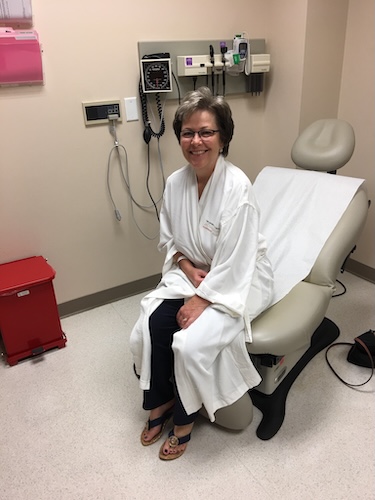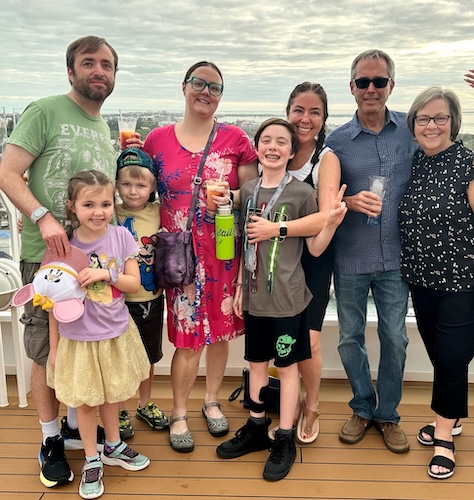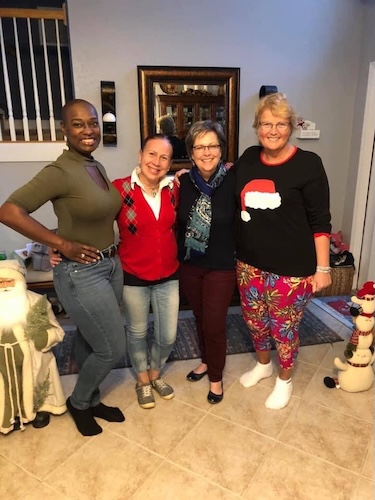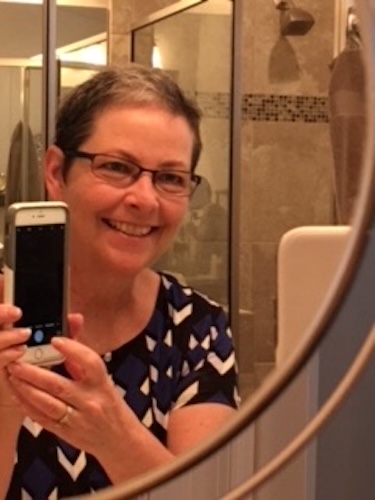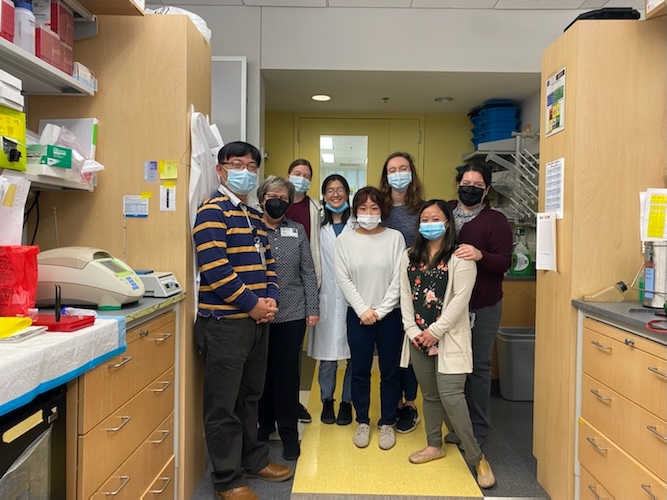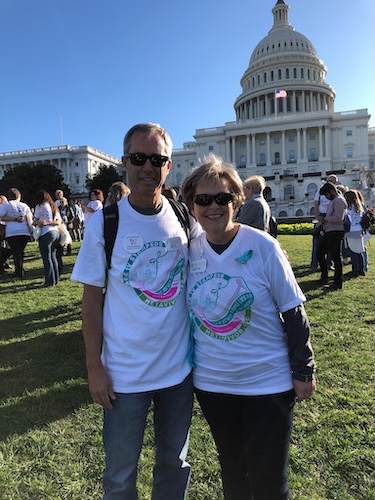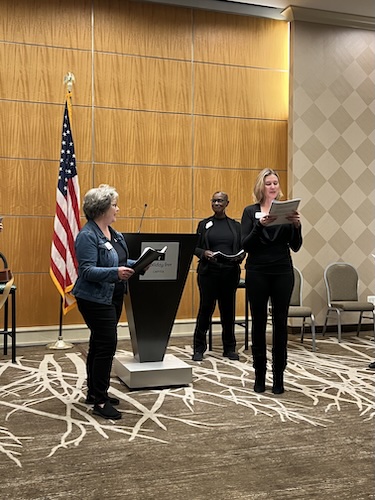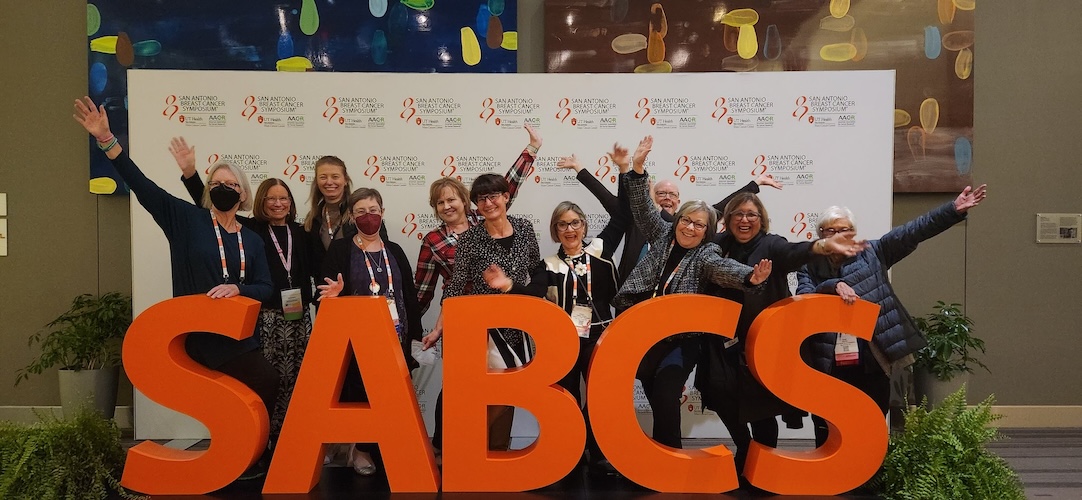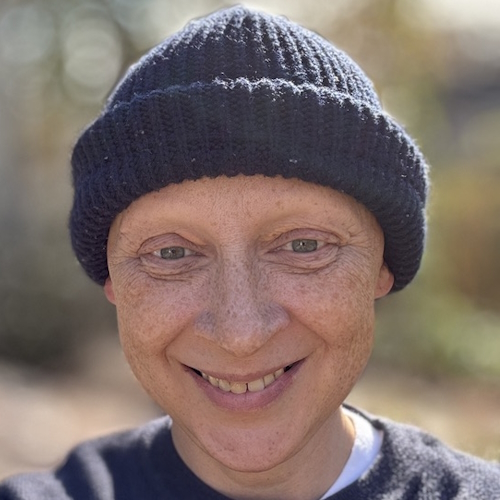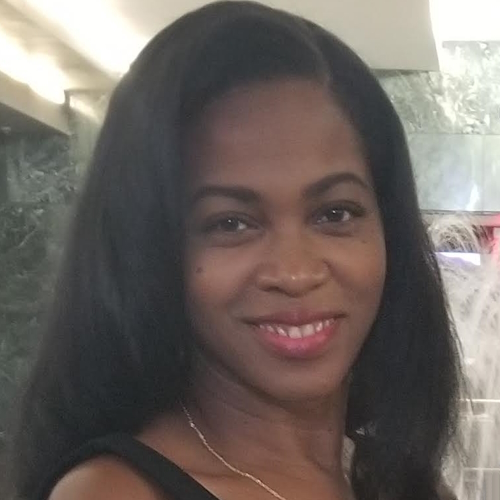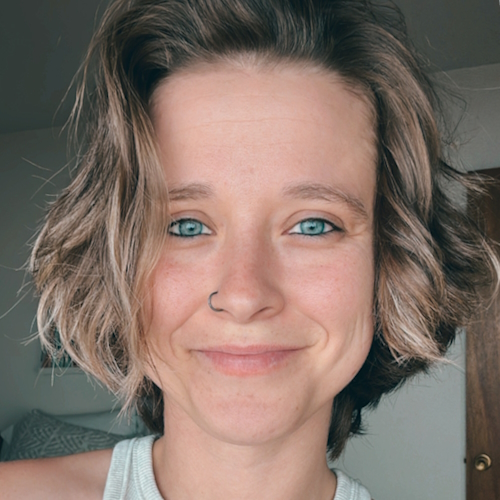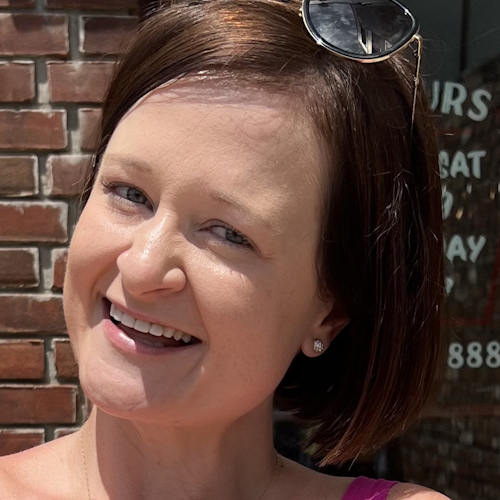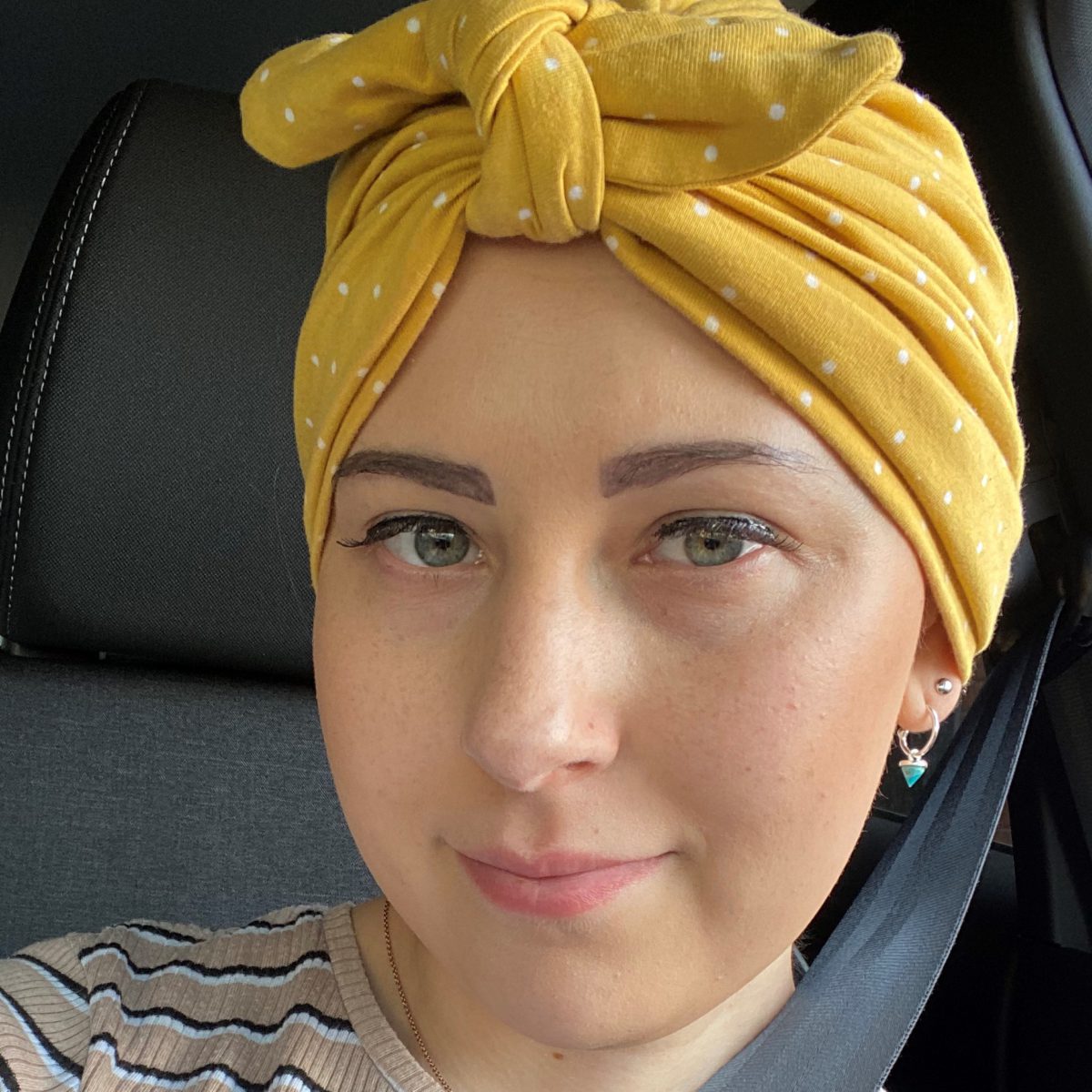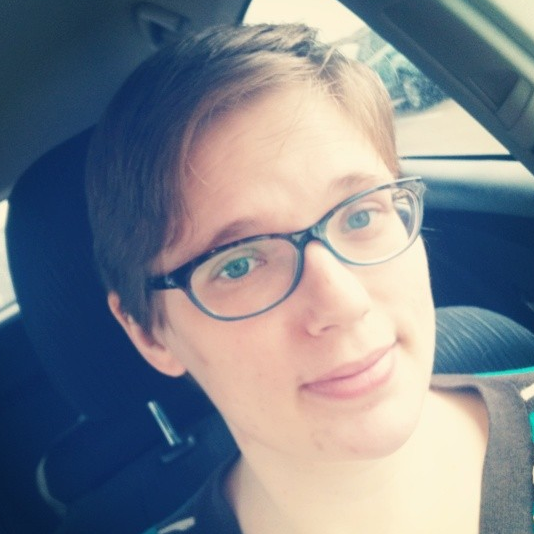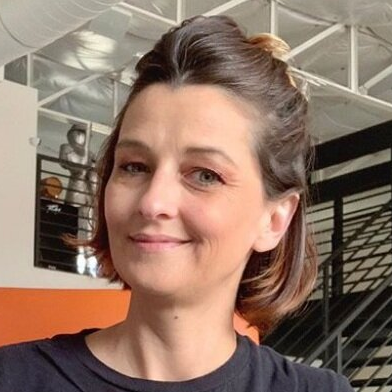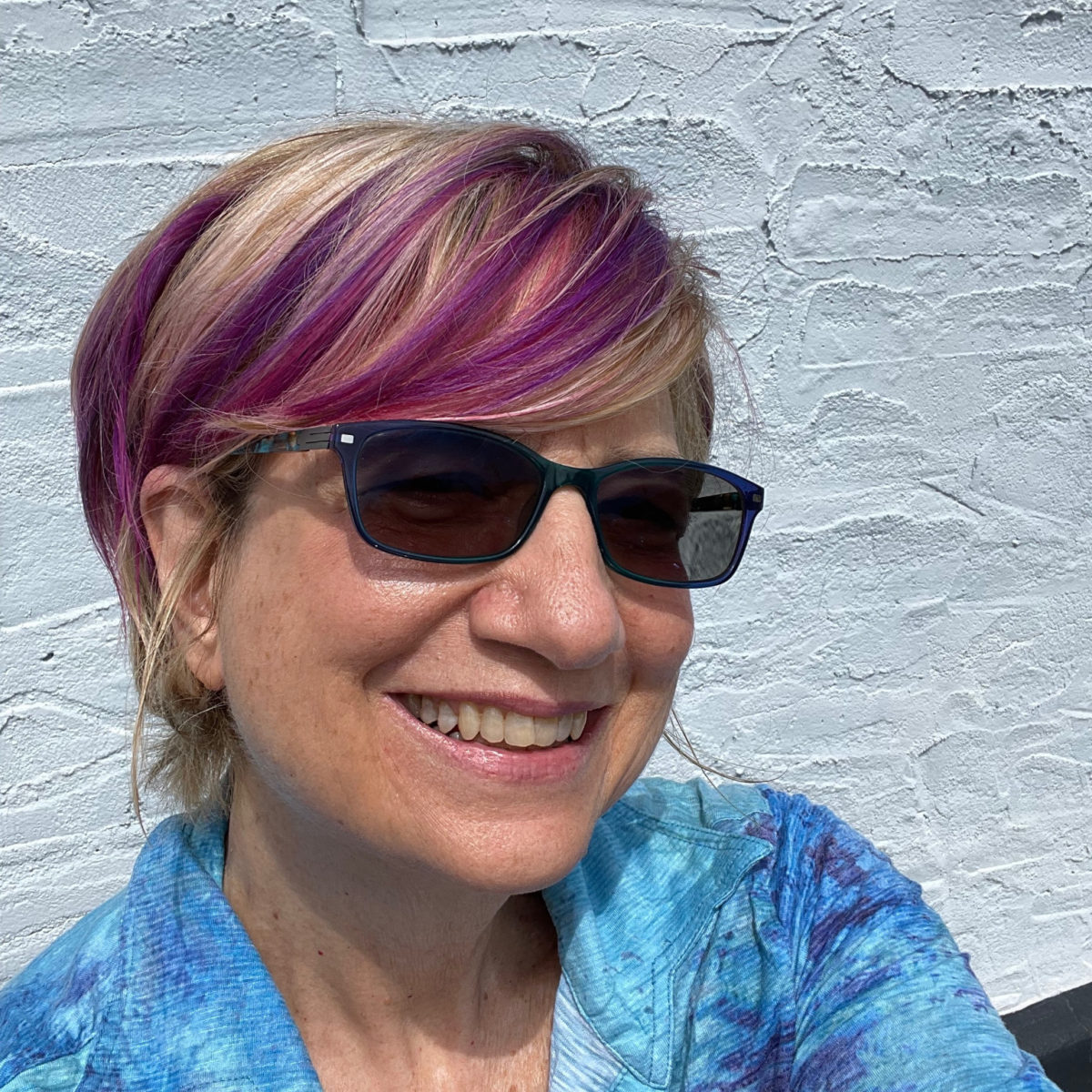The Gift of Time: Janice Found Purpose and Advocacy Through Stage 4 Triple-Negative Breast Cancer
When Janice was first diagnosed with stage one triple-negative breast cancer, she had no idea that her experience would later lead her into the world of advocacy for other breast cancer patients. A lifelong nurse, Janice thought cancer was something she could identify and help others through. But when it touched her personally, it transformed both her perspective and her purpose.
Interviewed by: Taylor Scheib
Edited by: Chris Sanchez
Janice’s early-stage breast cancer treatment in 2011 involved a lumpectomy, brachytherapy, and chemotherapy. For several years afterward, she lived cancer-free, traveling, spending time with her grandchildren, and easing the fear that recurrence might return. Things changed in 2016 when she found out that her cancer had spread to her lymph nodes, advancing to stage 4 metastatic triple-negative breast cancer, a type known for its limited treatment options and poor prognosis.
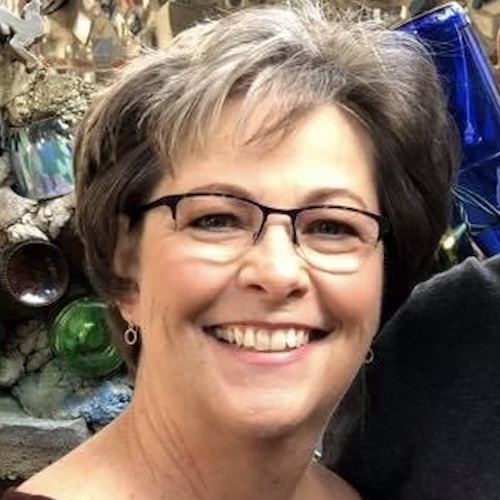
Janice’s response to treatment astounded everyone. Following a combination of chemotherapy and radiation, her PET scan revealed no evidence of disease. Instead of returning to work in healthcare, she redirected her professional experience into patient advocacy, dedicating herself to peer mentorship, community support, and empowering other patients navigating similar diagnoses.
Now more than eight years out from her stage 4 diagnosis, Janice lives with gratitude and purpose. She serves as director of peer-to-peer programs at Metavivor, a nonprofit that helps patients with metastatic breast cancer, and manages online support communities for those newly diagnosed. Through her openness, empathy, and advocacy, Janice redefines what it means to live with metastatic triple-negative breast cancer.
Watch Janice’s video and browse the transcript of her interview below, and you will:
- See how peer support can be life-affirming and even lengthen survival for patients with metastatic disease
- Discover that having the right care team can dramatically impact outcomes
- Realize the immense emotional weight in facing recurrence, and see how patients benefit from mental health and peer resources
- Delve into how Janice transformed grief and fear into advocacy and education for others
- Learn this universal truth: Connection and empathy can restore hope, even in the hardest circumstances
- Name: Janice C.
- Diagnosis:
- Triple-Negative Breast Cancer
- Age at Diagnosis:
- 58
- Staging:
- Initially stage 1, progressed to stage 4
- Symptoms:
- Appearance of lump in left breast near sternum
- Fatigue
- Bone and joint pain
- Treatments:
- Surgery: lumpectomy
- Radiation: brachytherapy
- Chemotherapy
This interview has been edited for clarity and length. This is not medical advice. Please consult with your healthcare provider to make informed treatment decisions.
The views and opinions expressed in this interview do not necessarily reflect those of The Patient Story.
Hi, my name is Janice
I was diagnosed with stage one triple-negative breast cancer in 2011. Five years later, in 2016, I was diagnosed with stage four metastatic triple-negative breast cancer.
I wanted to be a nurse from the time I was three years old. For me, those big dreams never changed. I worked as a nurse, mainly in pediatrics, for over 20 years and absolutely loved it — the children and the nursing profession. After the pediatrician I worked for left private practice, I did a short stint in pharmaceutical sales. I have always been connected to healthcare in some way; it is a true passion. Although I am retired from nursing, my diagnosis led me back into healthcare environments.
I’ve been married for 46 years. I have two adult children and three beautiful grandchildren, ages eight, nine, and ten, whom I call my grand joys. I treasure our time together; they love visiting me in winter.
After my early-stage breast cancer diagnosis, I did not get involved with advocacy initially. My husband had just retired; we sold and bought a house, and moved into it — all within a three-week period and during my diagnosis. It sent us on a different path for retirement. We planned to travel the world and enjoy life, but after my treatment and getting past the initial fear of recurrence, we resumed travel and welcomed our grandchildren.
Then I found out I had stage four triple negative breast cancer. The prognosis was bleak, with a median overall survival of around 9 to 15 months in 2016. I wondered how to spend that time outside of being with loved ones. I became interested in advocacy and applied for Hear My Voice through Living Beyond Breast Cancer. I was accepted and went for training in Philadelphia in April 2017, about nine months after my metastatic diagnosis. I thought I would have a bit of time to make an impact, but then I had a complete response to my first line of treatment.
One month after treatment, I had radiation, and then a follow-up scan showed no evidence of disease. There were no targeted therapies for triple-negative breast cancer in 2016. My oncologist suggested monitoring with scans and would start treatment again if anything reappeared. That was eight and a half years ago. I feel very blessed.
After that, I dove into advocacy: research, peer support, and attending scientific breast cancer conferences. My husband likes to say we are retired, but my wife works 30 to 40 hours a week as a volunteer. He supports my advocacy work. Through this community, I’ve met wonderful people, including advocates and other patients. Although I’ve lost many friends over the years, staying active in this space allows me to honor them and keep their memories alive.
Finding the first lump
I found a lump near my sternum in my left breast right before my annual mammogram. At my gynecologist visit the day before, I reported the tiny, tender lump, about the size of a little pea. My gynecologist said, “That’s good news because cancer isn’t painful, it’s not tender. Still, report it at your mammogram.”
The next day, the mammogram tech struggled to image the lump because it was near the sternum and up high, but she succeeded. My gynecologist was shocked since she hadn’t felt anything during the exam. As a nurse, I asked to see the tissue from my core needle biopsy and, seeing that it was tan, suspected bad news. A week later, I found out it was triple-negative breast cancer.
Despite other cancers in my family, I have no breast cancer history; I was the first. My gynecologist’s comments led me to believe it was nothing serious, but the diagnosis was a shock.
How they treated my first diagnosis
Since I was stage one, my treatment plan, which is managed differently now than in 2011, involved a lumpectomy, then radiation, and finally chemotherapy. I received brachytherapy radiation with a balloon inserted into the lumpectomy cavity, twice a day for five days, with beads targeting that area.
I had chemotherapy after radiation. My oncologist, who was a generalist, originally suggested six rounds. As a nurse who values second opinions, I consulted additional specialists. The second opinion recommended four rounds instead of six, which was excellent news given the side effects I experienced.
I feared the cancer’s return
After finishing chemotherapy, I knew recurrence risks were high, but I did not realize cancer could jump directly from stage one to stage four. My mammograms and labs were normal, but fear of recurrence lingered, especially for the first two years. Triple-negative breast cancer is known to recur within two to three years. After reaching the third year, I relaxed somewhat, but the first six months were very difficult; I believe I had PTSD.
Support from a nurse via my insurance company each month helped calm anxiety. Eventually, I learned that 30% of those with early-stage breast cancer face metastatic recurrence.
At my five-year checkup, after resuming life, traveling, and spending time with family, I reported bone and joint pain. My oncologist suggested a PET scan “just to make sure,” as recurrence five years out seemed unlikely. But that wasn’t the case.
I recieved a stage 4 diagnosis
After the PET scan, I met with my oncologist, who always delivers results in person. My husband, who, with one exception, has attended every appointment, was with me.
My oncologist, sitting close, took my hands and said, with tears in his eyes, “I am so sorry. Your PET scan shows recurrence of disease.”
I was fortunate to have oligometastatic disease, meaning a low burden of disease —regional lymph nodes on the original side and one contralateral node, qualifying as stage four. No bone metastases were found, and the bone and joint pain was attributed to a medication side effect, not cancer. That pain may have saved my life by prompting further investigation.
We were speechless. The car ride home was silent, and processing the news took time. Research from vetted sources showed metastatic triple-negative breast cancer was typically “pretty gloom and doom.” Telling my family, especially my adult children and very young grandchildren, was difficult. My daughter struggled most with the thought of losing her mother.
Navigating the right care team and second opinions
Many do not know much about metastatic breast cancer and incorrectly assume all breast cancer types are the same. My husband joined me at the Living Beyond Breast Cancer conference in 2017, attending sessions I marked for him, though he is an engineer, not a healthcare professional. He took “furious notes.”
He suggested getting a second opinion and prepared questions for my oncologist: “Do you see all types of cancers? Do you have metastatic TNBC patients?” My oncologist had none and focused on GI cancers, although he had some breast and metastatic breast cancer patients. This prompted my search for top breast medical oncologists at NCI-designated cancer centers, leading to multiple second opinions.
Recommendations took me to Moffitt, Mayo Jacksonville, a phone consult at Dana-Farber, and eventually MD Anderson in Houston, where I found an oncologist who was a perfect fit. I saw her annually and recently changed my local oncologist as well.
Peer support and advocacy are invaluable
Getting involved with Living Beyond Breast Cancer connected me to others living with metastatic disease and led me to hundreds of NBC-specific Facebook support groups. Joining these communities taught me invaluable lessons about my disease, its subtypes, and treatments through peer experiences.
Peer support is essential. Metastatic breast cancer is isolating and lonely, but connection through online and in-person groups is vital. There’s evidence suggesting that those who join peer support groups may experience longer survival. I am the director of peer-to-peer at Metavivor, where we train leaders to start in-person support groups. Nothing replaces face-to-face connections.
It is a total emotional rollercoaster when you’re newly diagnosed. To help newly diagnosed patients, I founded a Facebook group specifically for those within two years of diagnosis. Everyone in the group is in the same headspace, learning together without fear of asking questions. When members reach three years, we “graduate” them into broader groups.
Heartwarming encouragement comes from peers: those a year or two ahead saying, “You’ll get there, I promise.” Experienced peers reassure, “You will feel more at peace once you get a little time.” That encouragement means everything, especially coming from those who have lived it.
The steps I took with stage 4 breast cancer
After my stage four diagnosis, the oncologist suggested chemotherapy. At the time, no targeted therapies were available. Now, immunotherapy and antibody drug conjugates exist for metastatic TNBC. The treatment plan was combination chemotherapy, then a scan after four cycles to evaluate.
At my fourth cycle, my PET scan showed that every single lesion had resolved, and there was no evidence of metastatic disease. My oncologist proposed radiation instead of more chemotherapy, then another scan, and continued monitoring, with no active treatment unless something reappeared. This was unsettling, as I had learned that most stage four patients remain on treatment for life. I pursued additional second opinions, all of which agreed with my oncologist’s close monitoring approach.
The first year involved scans every two or three months, then every four to five months, then every six months. Last year, my scans increased from every six to nine months, and now to annual scans.
A couple of times, suspicious findings — such as a possible lung lesion — were later cleared with further testing. The emotional journey has been intense, but being so far out, with no evidence of disease, is remarkable. If progression happens, it will feel like a brand-new diagnosis.
What I want others to know
When you’re diagnosed with metastatic breast cancer, it is not an immediate death sentence. There is hope if you look for it.
I know that it’s hard. It’s very, very hard. But it helps if you learn as much as you can about your disease in particular. Learn as much as you can about the treatments that are available for your disease.
You don’t have to learn about everything. You don’t even have to get involved in advocacy. But you have to self-advocate. You need to be your own best advocate. And that requires having just some basic knowledge about your disease and the treatments that are available for your disease.

Inspired by Janice's story?
Share your story, too!
More Triple-Negative Breast Cancer Stories
Maggie C., Triple-Negative Metastatic Breast Cancer, PD-L1+
Symptoms: Bruising sensation in the breast, soft lump
Treatments: Chemotherapy, clinical trial (antibody-drug conjugate and immunotherapy)
April D., Triple-Negative Metastatic Breast Cancer, BRCA1+
Symptom: Four lumps on the side of the left breast
Treatments: Chemotherapy (carboplatin, paclitaxel doxorubicin, surgery (double mastectomy), radiation (proton therapy), PARP inhibitors
Chance O., Triple-Negative Breast Cancer, Stage 2, BRCA1+
Symptom: Lump on breast
Treatments: Chemotherapy (doxorubicin, cyclophosphamide, paclitaxel, carboplatin), surgery (double mastectomy), radiation, radical hysterectomy (preventive)
Kelly T., Triple-Negative Breast Cancer, Stage 3C
Symptoms: Swollen lymph nodes on the neck, high white blood count
Treatments: Chemotherapy (doxorubicin, cyclophosphamide, paclitaxel, carboplatin, capecitabine), surgery (nipple-sparing, skin-sparing double mastectomy), radiation, hormone therapy (tamoxifen)
Lucy E., Triple-Negative Breast Cancer, Grade 3, BRCA1+
Symptom: Lump in breast
Treatments: Chemotherapy, surgery (double mastectomy)
Melissa H., Triple-Negative Breast Cancer, Stage 2B, IDC
Symptom: Lump in left breast
Treatments: Surgery (mastectomy), chemotherapy
Symptom: Pea-sized lump
Treatments: Chemotherapy, surgeries (bilateral mastectomy, reconstruction)
Stephanie J., Triple-Negative Breast Cancer, Stage 3, Grade 3, IDC, BRCA1+
Symptom: Lump in left breast
Treatments: Chemotherapy, surgery (double mastectomy, oophorectomy, hysterectomy, breast reconstruction)
Symptoms: Lump, twisted and caved-in nipple
Treatments: Surgery (double mastectomy, lumpectomy), radiation, chemotherapy
